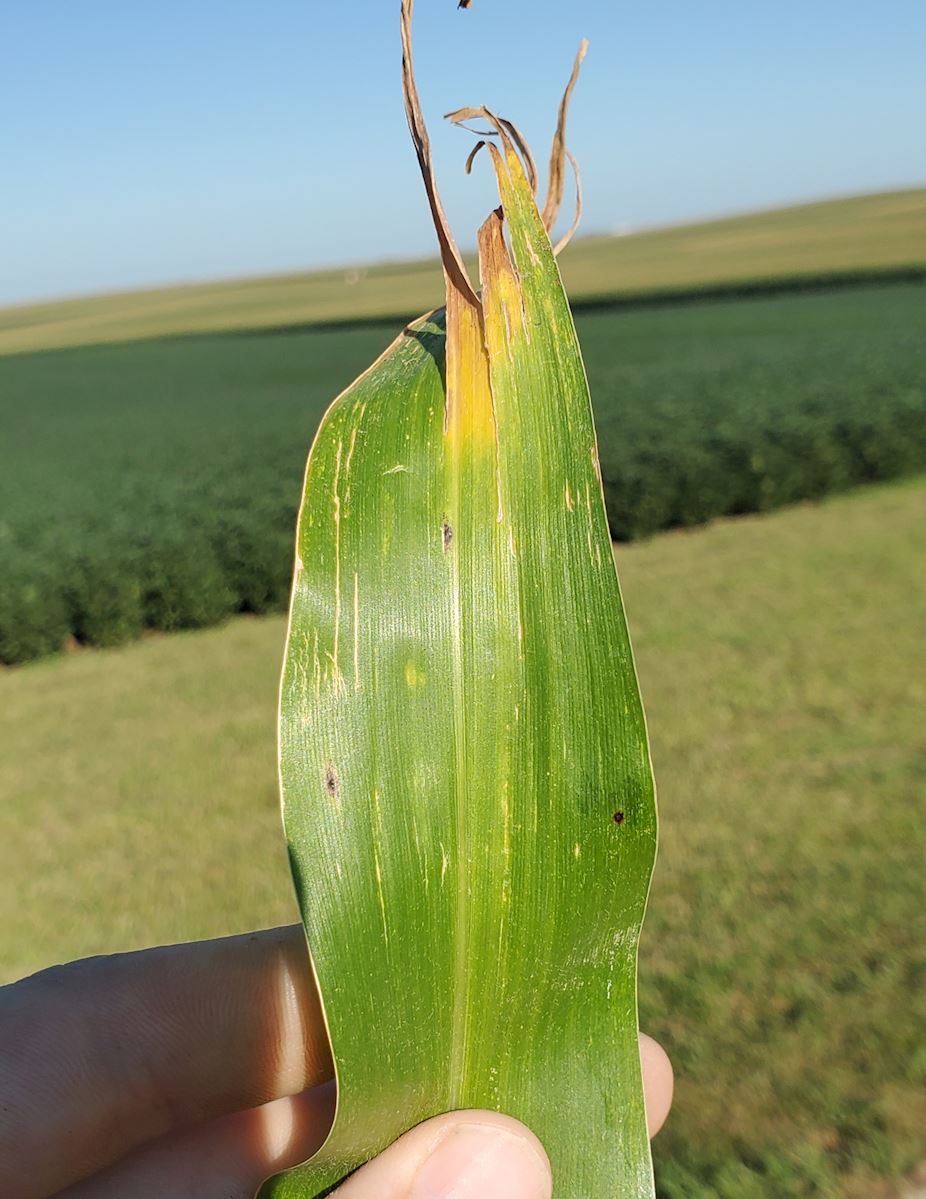August 12th, 2022
posted
by Andrew Blomme on 8/11/2022
in
Weekly Newsletter

August 12th, 2022
Insect Update
This stretch of the year always has the most insect activity. The past 7 days I have come across several pests in both the corn and bean crop in the area.
In the corn we can find corn rootworm adults still active. Now that the corn crop in pollinated the amount of damage that rootworm adults can do is very limited. However spotting these pregnant females can help us make decisions for next year. These females will be laying eggs in the next 7-10 days and those eggs will be pests for next year's corn crop.

We can start seeing corn earworm larva in the field as well. The best form of earworm control is the Viptera insect trait. That trait is available in several newer AgriGold hybrids as well as in hybrids with the Trecepta trait.. As a rule of thumb if earworm eat only 3 kernels on every ear in the field they will have reduced your yield by a bushel/acre.
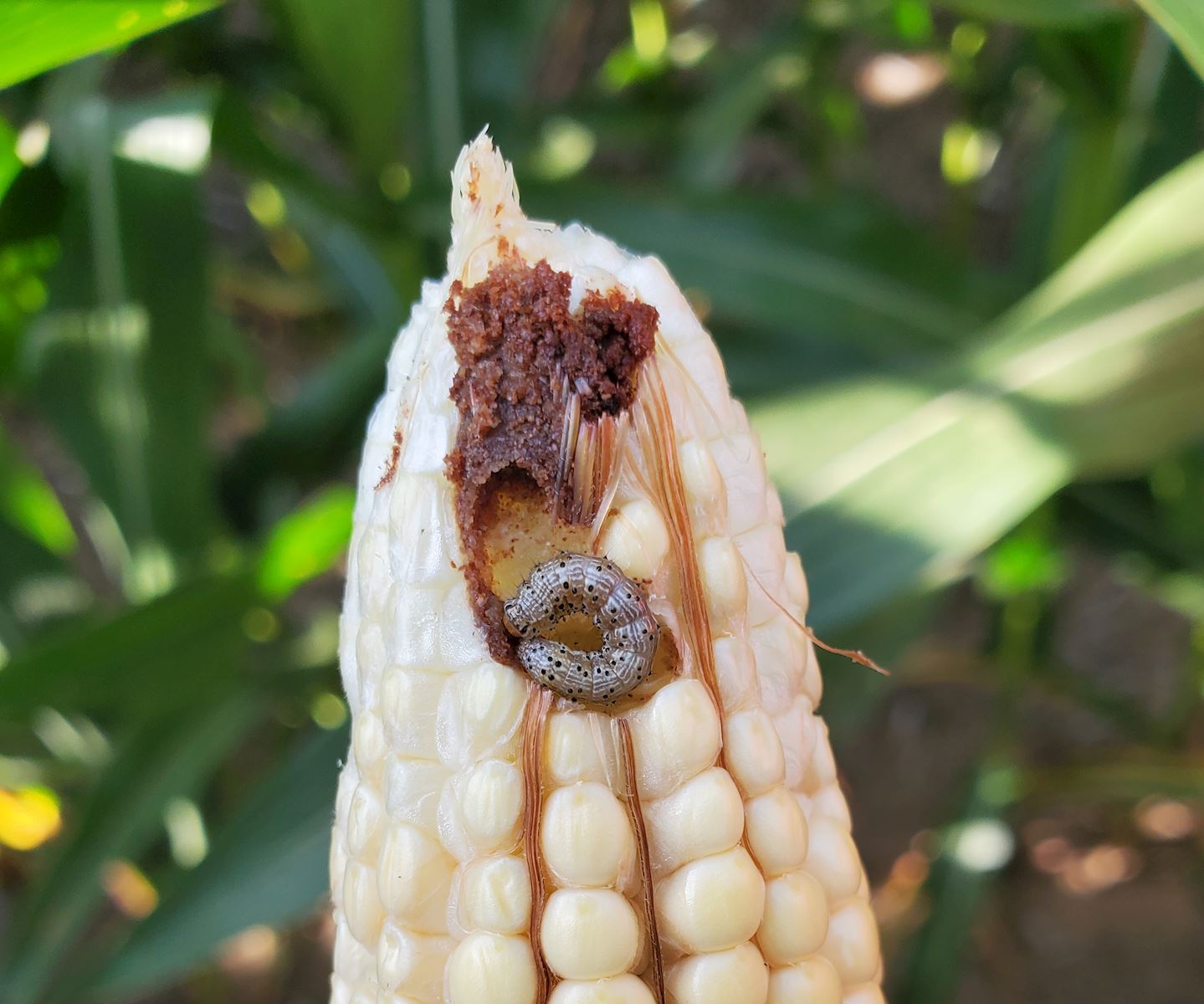
Lastly, in the corn crop I have come across several pockets of aphids. Aphids can be kind of tricky because it takes a very high number of them per plant to cause serious damage but at the same time aphids can reproduce very rapidly. An aphid colony can double its population in 7-10 days in the right conditions. In the picture below you can see an aphid colony. Also in the picture is a lady beetle. Lady beetles are natural predators to aphids.
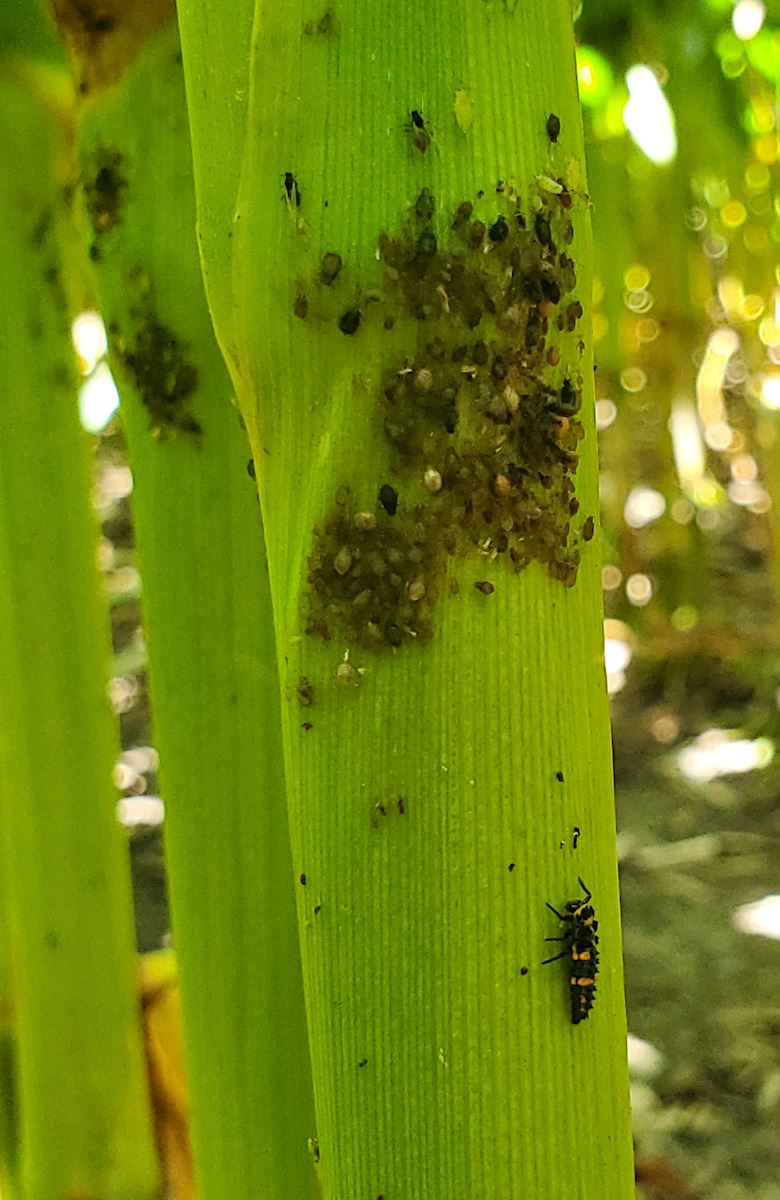
Moving on to the soybean pests in the area. We are seeing more gall midge damage lately. Damage is mostly concentrated towards the field edges. You can find the orange larva by snapping the soybean stem towards the base of the stem as pictured below.
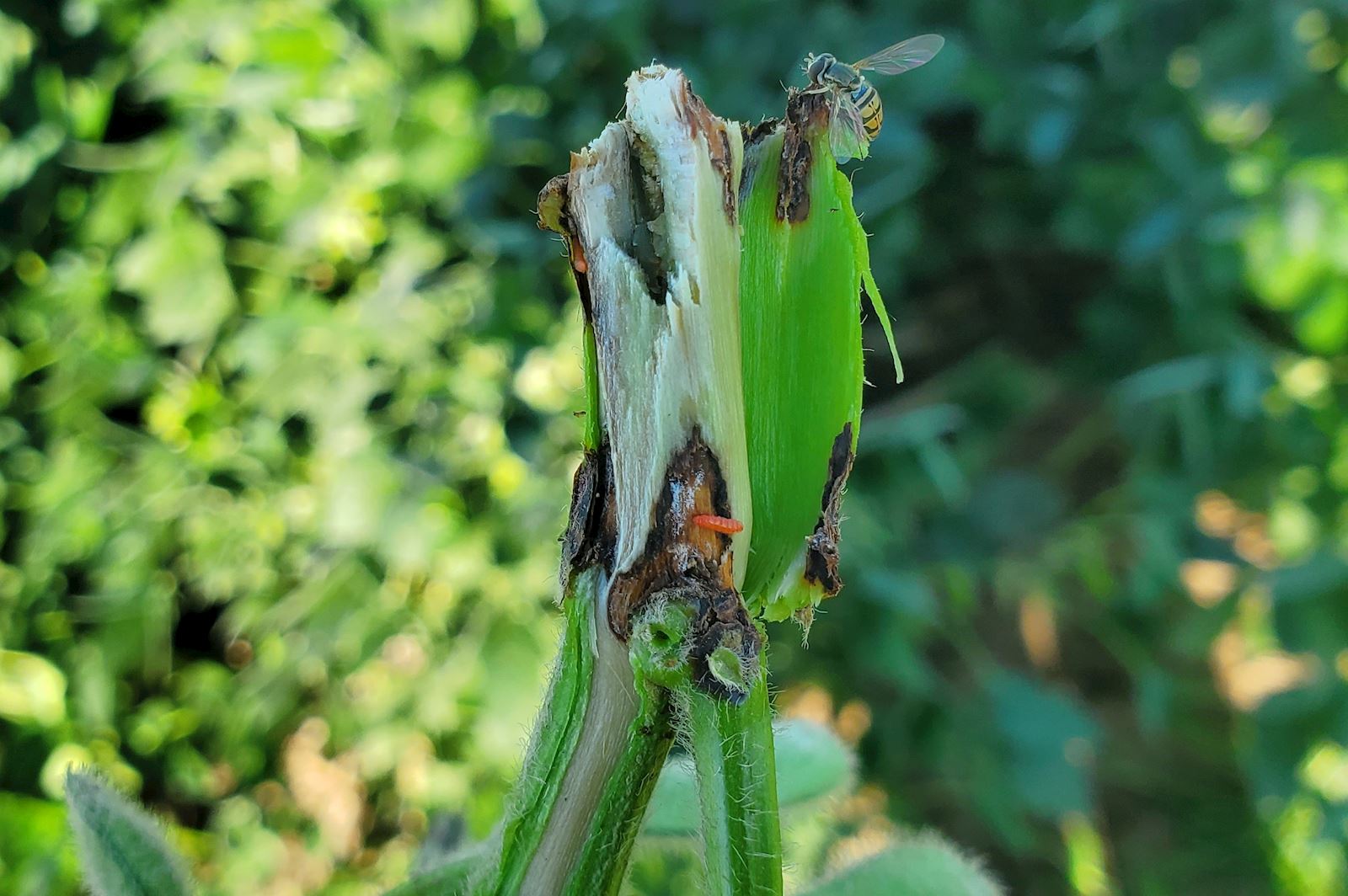
This last insect is a little blast from the past. I found a couple thistle caterpillars this week in the soybean crop. Thistle caterpillars were a common problem in 2019. I found a couple of them in 2020, zero of them in 2021, and a few this year. Thistle caterpillar numbers this year are very low and generally are not a concern.
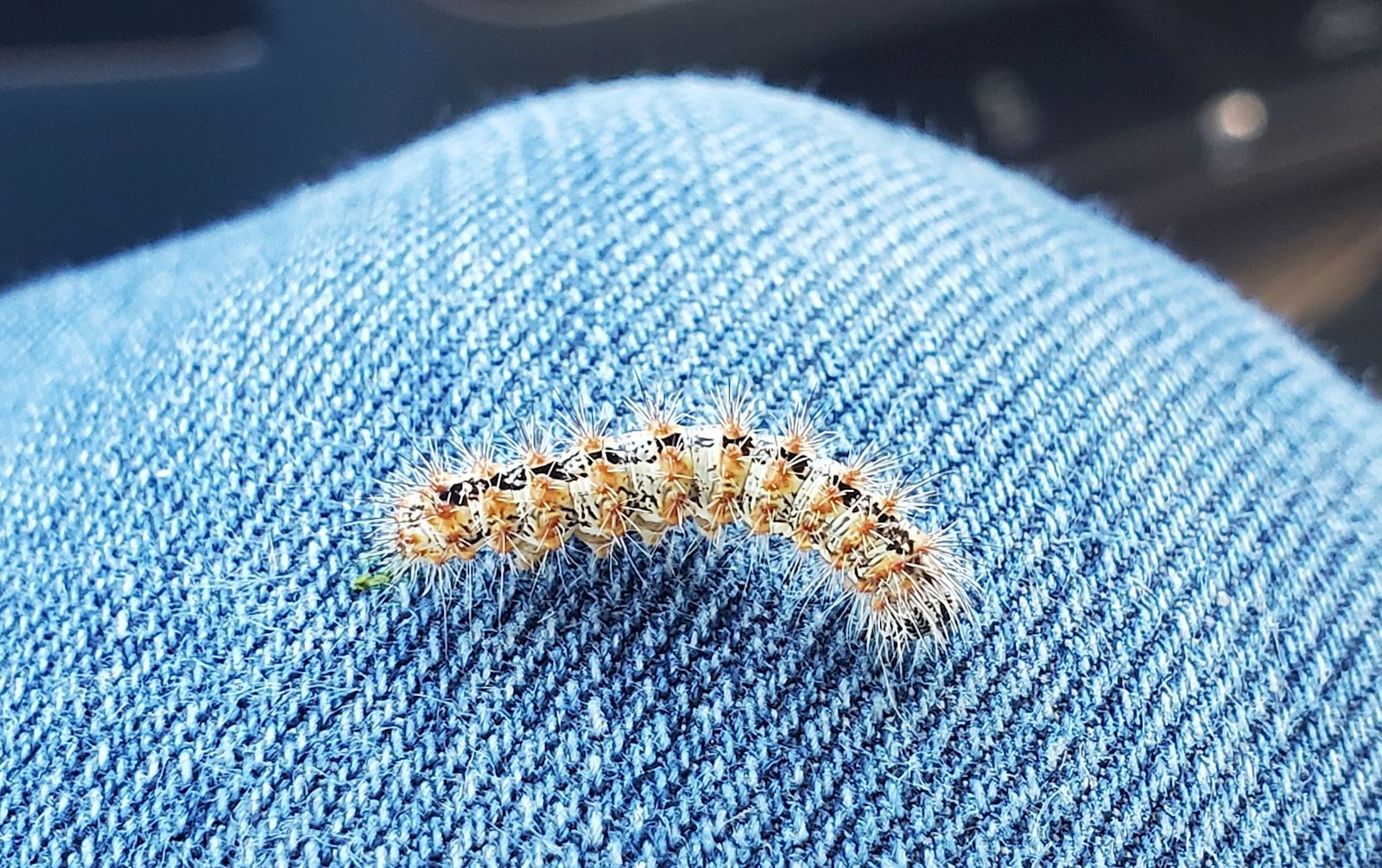
Tar Spot Update
Over the last week we have found the beginnings of tar spot in several corn fields in the area. Pictured below is a corn leaf with 3 tar spot pustules on it. Tar spot typically gets blown in from the east. In every case the disease's development is very early. Tar spot prefers cooler, wetter conditions with prolonged leaf wetness. The forecast for next week looks like it may be favorable to this disease. We will continue to monitor tar spot as it develops.
